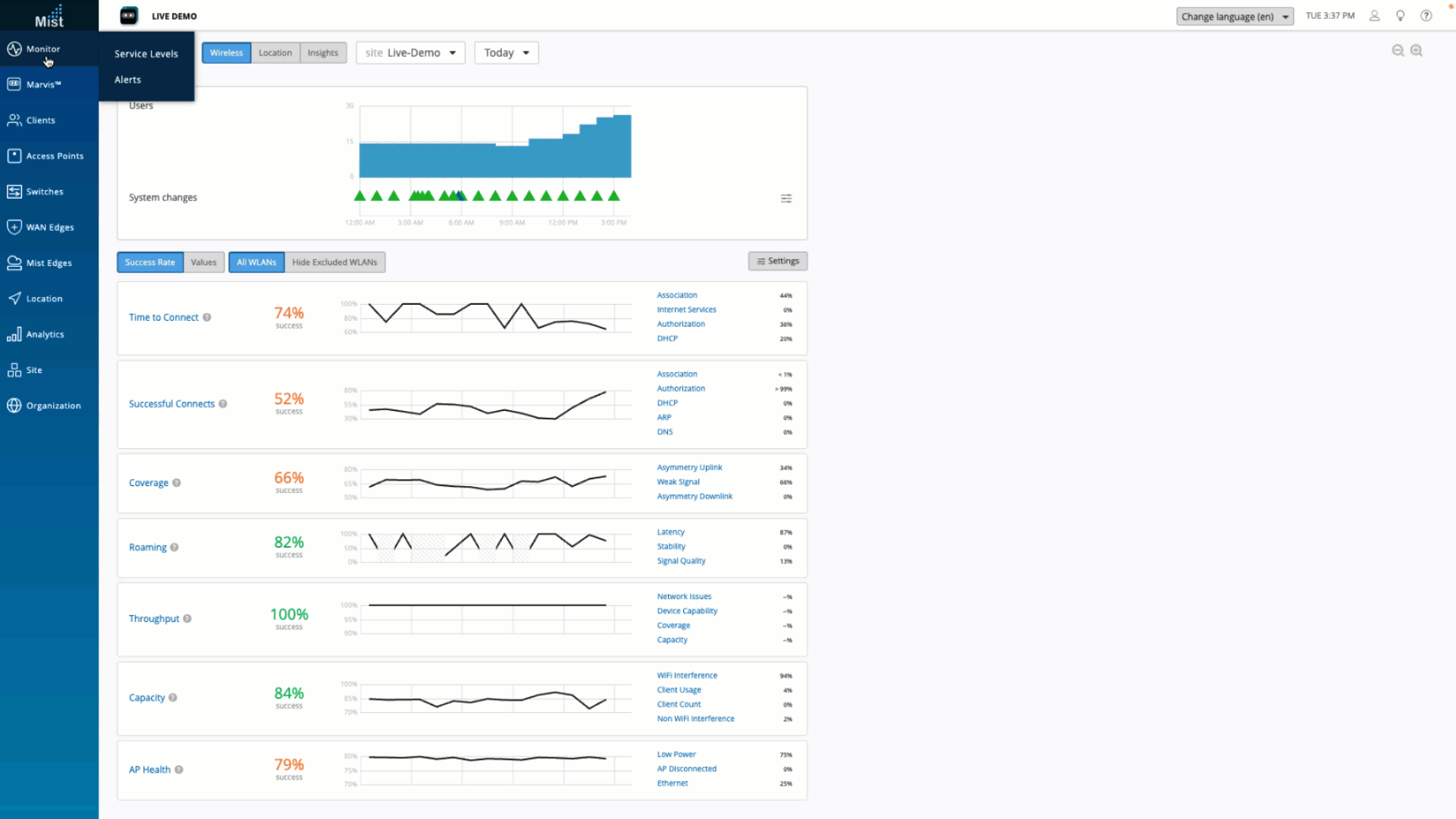Using SLEs for Troubleshooting
Learn how to use wireless SLEs to find the root cause of an issue and get details about scope, affected users, and more.
Service Level Expectations (SLEs) provide metrics that represent users' network experience. In addition, the SLEs are a powerful troubleshooting tool that you can use to drill-down to the root cause and fix the issue, not just the symptom.
The following figure shows how you can use SLEs and their classifiers (explained below) to troubleshoot an issue. This walk-through represents just one of the many ways you can use service levels and classifiers. The Juniper Mist portal provides dozens of different service level metrics and classifiers that you can use to investigate and understand your users' network experience.

In this example, each SLE block displays the success rate as a percentage. Take the Time to Connect SLE, for example. The 74% success rate means that 74% of the connection attempts were successful. The remaining 26% of the connection attempts did not succeed. On the right side of each SLE block, you see the percentage of unsuccessful attempts that were attributed to each classifier.
Click an SLE or classifier for additional troubleshooting details such as statistics, distribution, affected items, and so on.
